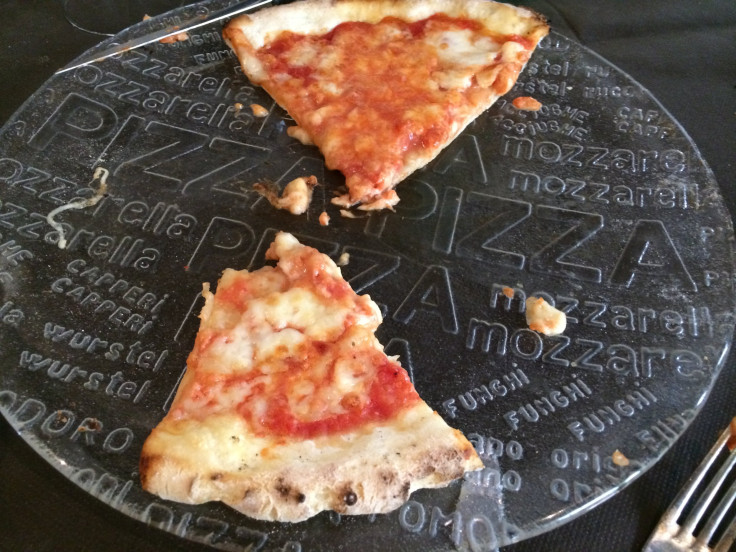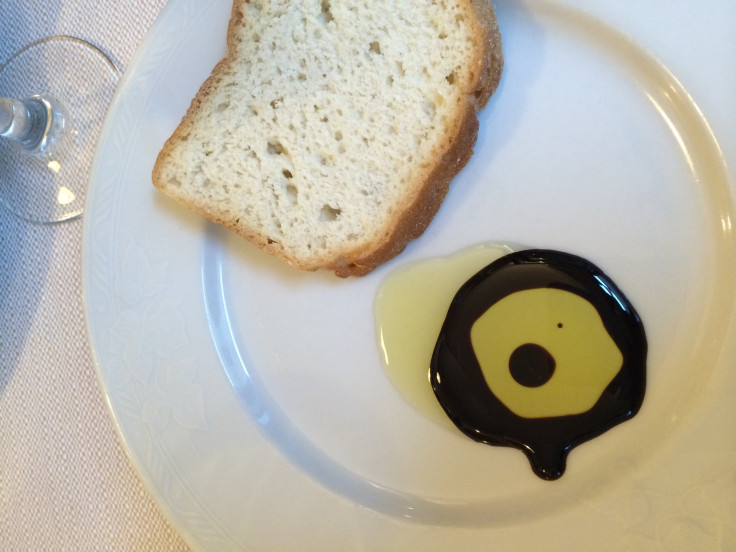For A Gluten-Free Trip With Kids, Try Italy, Land Of Pasta And Pane

Most people, when we said we were taking a 2-week family vacation in Italy, said we must be crazy. Our 11-year-old daughter was diagnosed with Celiac Disease at age 5, at which point we immediately rid our house and lives of gluten, a protein in wheat, rye and barley – and of course the pasta that seems to be the default offering on children’s menus. We became one of “those” families, the ones we used to call “food freaks,” who read all labels, bring our own food to birthday parties, and rarely eat at restaurants where we can’t control practices in the kitchen.
So why of all places, people wondered, would we take our daughter to the land of pizza, pane and focaccia, not to mention spaghetti, fusilli, penne and farfalle?
Reason 1: My wife has a long-standing love of the country, developed while traveling there after college, which she wanted to share with her tween daughter. Reason 2: Our daughter is learning about ancient cultures in school, and we thought this trip -- her first out of the country that she’d remember -- would be an ideal way to show her 1,000 years of history in the ancient city-states of Venice, Florence and Rome.
There was actually a third reason to go, although we didn’t know it at the time: Italy, it turns out, is one of the best places for people who, for health reasons, must eat gluten-free. The level of awareness among ordinary Italians, not to mention front-line restaurant workers and kitchen staff, was uncanny. At one point we found ourselves having a conversation with our host at a bed and breakfast in Orvieto about the inner workings of the digestive system.

Even better, we weren’t once subjected to the kind of eye-rolls we sometimes get in the U.S., where going gluten-free became a fad diet for all kinds of misguided reasons and is now suffering a backlash as a result. Indeed, our hostess at a pizzeria in Venice was astonished to hear that anyone would adopt a gluten-free diet who didn’t have a medical reason.
But since we knew none of this before going, my wife did a ton of research to find a half-dozen restaurants in each city with gluten-free menus and confirmation in online reviews that celiacs had had a good experience. Expecting to do a good bit of picnicking and in-room eating, we also packed a half-suitcase full of food, including six boxes of Glutino crackers on which we planned to layer pecorino and prosciutto.
We didn’t need any of it. Our first night in Italy was in Venice, and as we set out along the Strada Nuova to find one of the restaurants we’d researched, we found something amazing: a great many restaurants had items “per celiaci” right on the menu. Some were clearly using it as a marketing pitch. We stopped in at Il Ristorante A Beccafico Arte after having a brief conversation with the maitre d’ outside.
Our daughter was nervous going into an unfamiliar restaurant -- and for good reason. The last time she inadvertently had gluten, the exposure provoked a violent bout of vomiting. But she needn’t have worried. The owner came out, took care of us personally, and assured us he knew what he was doing: His 13-year-old son has celiac, he said.
We had versions of that experience throughout our trip. We’d set out to find some pre-determined locale only to discover something else, often better, along the way. One restaurant in Orvieto invited our daughter into the kitchen to show how they create a separate area to prepare their gluten-free menu items.
Gelato, which is naturally gluten-free, was of course on our itinerary. We’d read about the Grom chain of gelaterias and put them on our itinerary in every city we went to. Grom staffers were well-informed about which flavors were gluten-free and took precautions with cross-contamination.
Grom has opened two stores in New York and a cart in Central Park. US director Giovanna Zaaruolo said opening those stores has given her a sense of the knowledge gap on celiac and gluten between Italy and New York. Italians tend to specify “celiac,” she said, while New Yorkers use the more generic “gluten-free.”
“We know it’s serious in Italy because of the number of people who ask if it’s safe for celiac,” she said. “We have to ask here if you’re celiac or gluten-free because we have different procedures for celiacs. It’s very serious.”
The language barrier wasn’t an issue for us because Italians understood the nature of “celiachia” -- that it’s not an allergy or a fashionable diet -- and how to prepare safe food.
Italian children are tested for celiac as part of normal health screenings before the age of 6, we learned. Those with celiac disease receive a 140 euro monthly stipend to cover the additional cost of food, as well as extra vacation time to shop (how European!). The Associazione Italiana Celiachia publishes a restaurant guide and provides annual reports for the Italian Parliament.

Gluten-free food is considered medicine for celiacs, so, like painkillers or antibiotic ointment, it’s carried in pharmacies. Labeling is comprehensive; if it passes the European Union’s strict standards, it’s labeled “senza glutine.” Grocery stores tend to have sections for gluten-free, as well as extensive gluten-free pasta selections. Barilla in Italy, for example, packages gluten-free pasta with a green label to avoid confusion. For parents of a celiac kid, it means less chance of facing that dreaded moment when you hear “I’m hungry” and don’t have anything safe to offer.
The U.S. is decades behind on all this, which also amazed the Italians we spoke to. “Ha, Italy is winning on something,” said our Orvieto innkeeper (days after Italy crashed out of the World Cup). “You always think the U.S. is about the future!”
With gluten-based food so much a part of their culture, Italians are understandably in the lead in dealing with the issue, but the rest of Europe isn’t far behind. We met a family from Sweden in one Rome pizzeria who told us the Swedish government sends gluten-free staples to families of celiac children for a subsidized 12 Euros a month until they are 18.
The U.S. Food and Drug Administration has just adopted rules on gluten-free labeling. They don’t go into effect until next year, but will at least give restaurants and food producers standards to adhere to.
The U.S. response to celiac is far behind because there is no screening, so no one really knows the true rate of incidence. There is a genetic component to the disease, so most estimates put it around 1 percent of the population. That’s slightly less than the percentage afflicted with peanut allergies, which average about 1.4 percent. Schools and airlines have rightfully taken peanut allergies seriously; peanut allergies vary in severity but anaphylactic shock, a serious reaction, can be fatal. While physical reactions to gluten also vary in celiacs, the damage caused can be serious -- the body essentially attacks itself and increases the incidence of all kinds of ailments including lymphoma and liver cancer.
Short term, a gluten reaction for a celiac is enough to ruin a trip. It took a while, but our daughter began to relax.
For two nights in Rome we gravitated to a little family-run place in Trastevere, Ristorante Mama. One night a group of six friends stopped in for dinner. One ordered “senza glutine.” The friends had apparently picked the place to accommodate the health of one woman in the group. That’s when it started to make sense. The ceremony of sharing meals is so central to Italian life, the idea of leaving someone out -- a celiac -- is unthinkable.
Our daughter had learned that she could rely on Italian chefs and restaurants to protect her. But that night at Mama’s, the pizza crust was so good that she sought a second opinion. “Papa, are you sure it’s gluten-free?”
And for once, I felt confident saying, "yes."
© Copyright IBTimes 2024. All rights reserved.






















